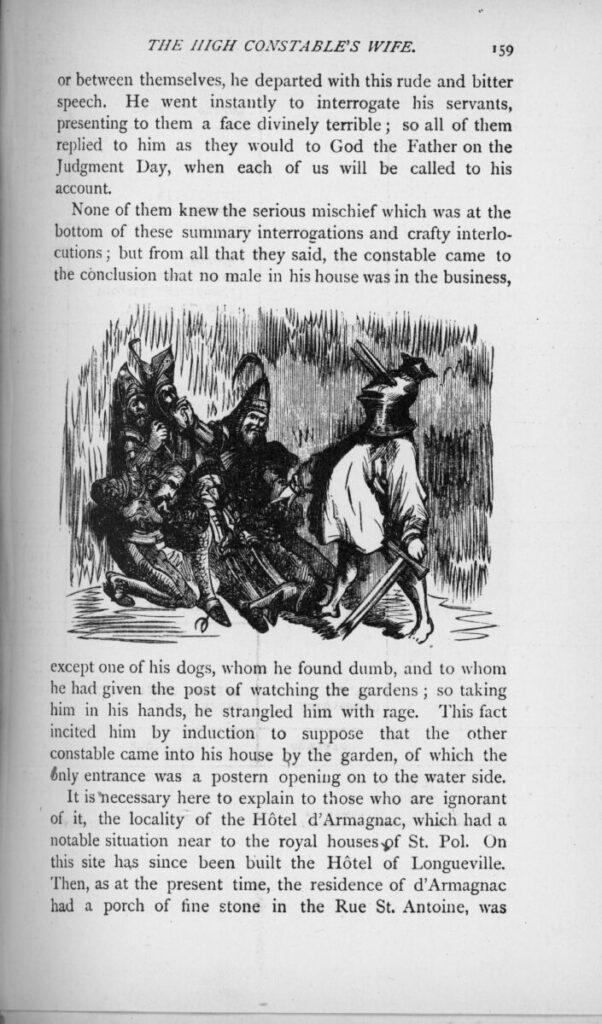Much of my day was devoted to this post on ‘The First Temptation of Saint Anthony’. I flagged up this book by Gustave Flaubert which I finished reading yesterday as today’s subject.
I am indebted to https://st-anthony-the-great.org.uk/st-anthony-the-great/
from which, in order to set the scene for this work I have gleaned the following extracts:
‘St. Anthony the Great or Antony the Great was a Christian saint from Egypt’ whose biography was written by St. Athanasius of Alexandria.
He was ‘the first known ascetic going into the wilderness (about A.D. 270–271), a geographical move that seems to have contributed to his renown. Accounts of Anthony enduring supernatural temptation during his sojourn in the Libyan Desert inspired the often-repeated subject of the temptation of St. Anthony in Western art and literature.’
‘Anthony was born in Coma (or Koma) near Herakleopolis Magna in Lower Egypt in 251 to wealthy landowner parents. When he was about 18 years old, his parents died and left him with the care of his unmarried sister. Shortly thereafter, he decided to follow the words of Jesus, who had said: “If you want to be perfect, go, sell what you have and give to the poor, and you will have treasures in heaven; and come, follow Me.”,[Mt 19:21] which is part of the Evangelical counsels. Taking these words quite literally, Anthony gave away some of the family estate to his neighbors, sold the remaining property, donated the funds thus raised to the poor, placed his sister with a group of Christian virgins, a sort of proto-monastery of nuns, and himself became the disciple of a local hermit.’ ‘Saint Anthony decided to follow [the hermitic] tradition and headed out into the alkaline Nitrian Desert region. Here he remained for some 13 years.’
‘There are various legends associating him with pigs: one is that for a time he worked as a swineherd.’
‘According to Athanasius, the devil fought St. Anthony by afflicting him with boredom, laziness, and the phantoms of women, which he overcame by the power of prayer, providing a theme for Christian art. After that, he moved to a tomb, where he resided and closed the door on himself, depending on some local villagers who brought him food. When the devil perceived his ascetic life and his intense worship, he was envious and beat him mercilessly, leaving him unconscious. When his friends from the local village came to visit him and found him in this condition, they carried him to a church.’
‘After he recovered, he made a second effort and went back into the desert. There he lived strictly enclosed in an old abandoned Roman fort for some twenty years…… The devil again resumed his war against Saint Anthony, only this time the phantoms were in the form of wild beasts, wolves, lions, snakes and scorpions. They appeared as if they were about to attack him or cut him into pieces.’
There is more detailed information on the quoted website.
My copy of the John Lane The Bodley Head edition of 1924, limited to 3,000, is number 1,433. It was given to me 1n 1976 as a farewell present from a Social Work student on completion of her placement.
Unusually, I will begin by complimenting the translator René Francis on his exemplary rendition of the flowing, descriptive, prose which, although I have not read the original, I recognise as the hallmark of the great French novelist whose ‘Madame Bovary’ and ‘L’Education Sentimentale’ I have read in his own tongue.
The title ‘The First……..’ indicated that this is the author’s initial, and considered most successful, version of his dramatic tale. This is explained in E. B. Osborn’s lengthy and scholarly introduction. The manuscript was completed in 1848. Flaubert suppressed a number of fragments when the work was first published in 1856. He struggled with conflicts about it until a second version, from which, the life itself is acknowledged to have been expunged. The Bodley Head publication follows the early manuscript and, along with useful notes, includes appendices of the eliminated sections.
It is most likely that Flaubert is using the story of the ascetic saint as a vehicle for his own conflicts. The luscious, stylised, illustrations of Jean de Bosschere indicate a rather more explicit imagination than that which the writer has allowed himself.


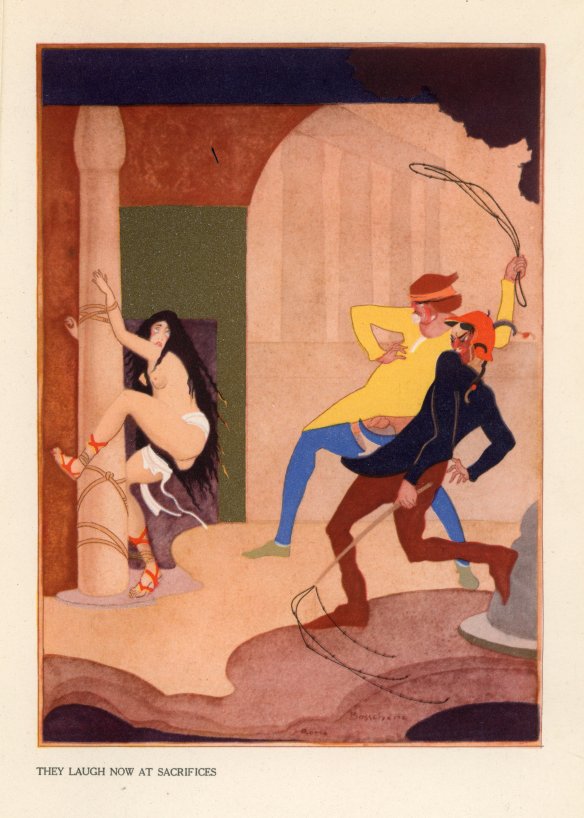

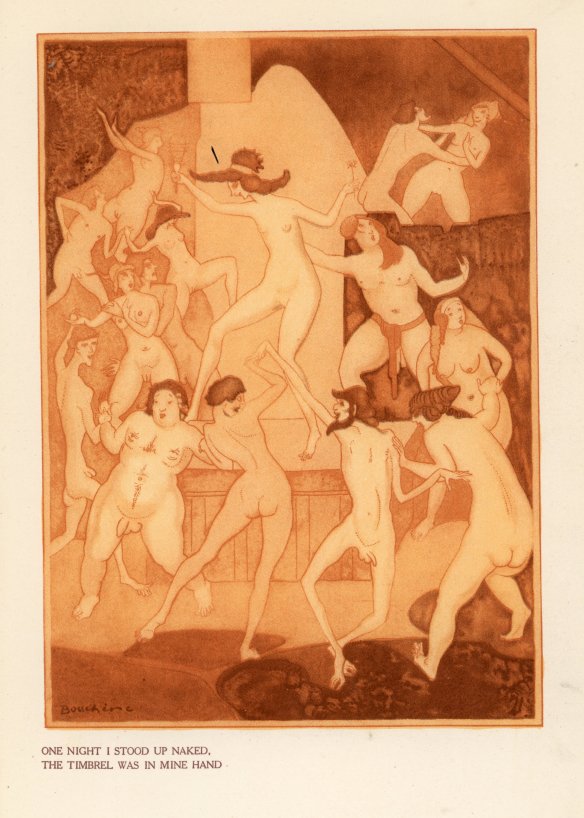



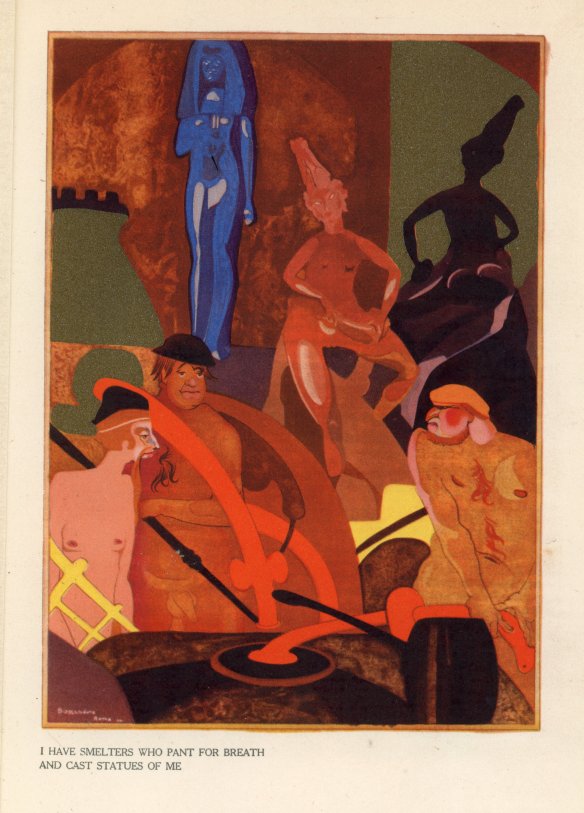

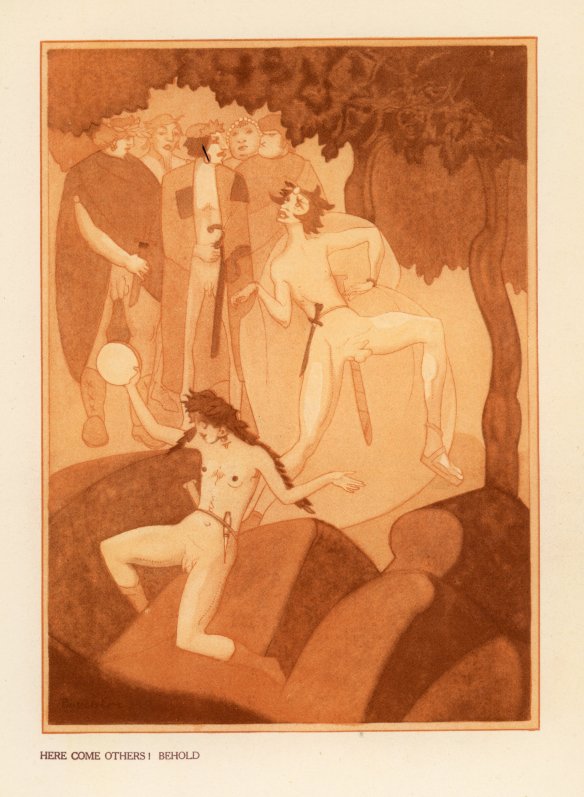

At regular intervals throughout the volume we have colour plates protected by clear tissue;





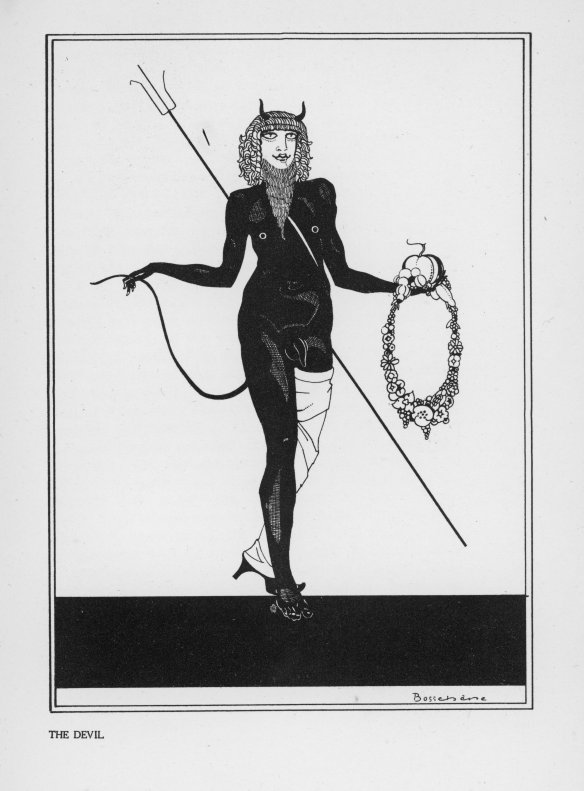

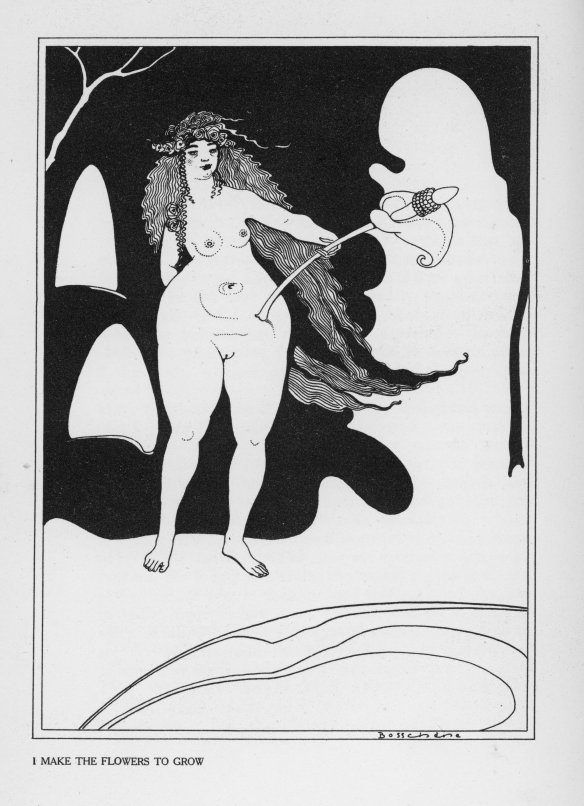
other full page images are produced in black and white,






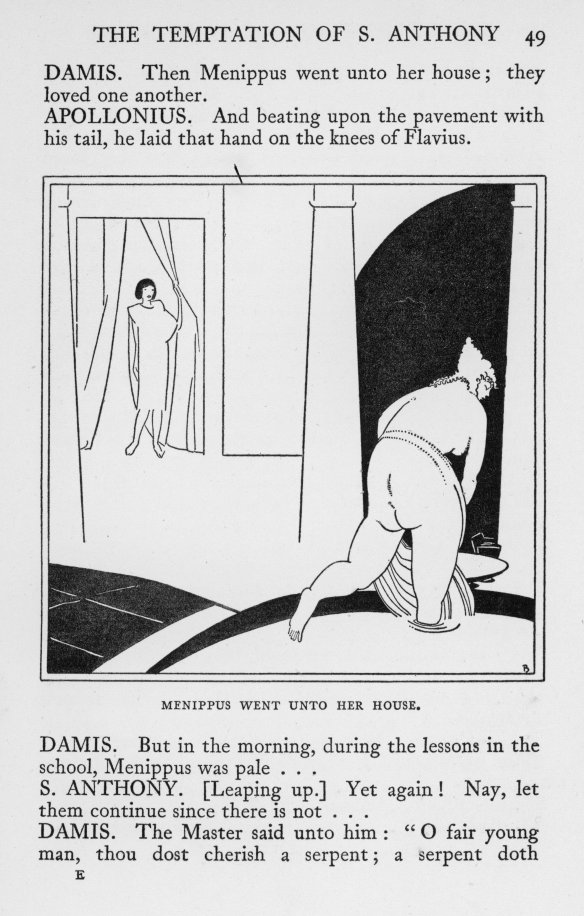













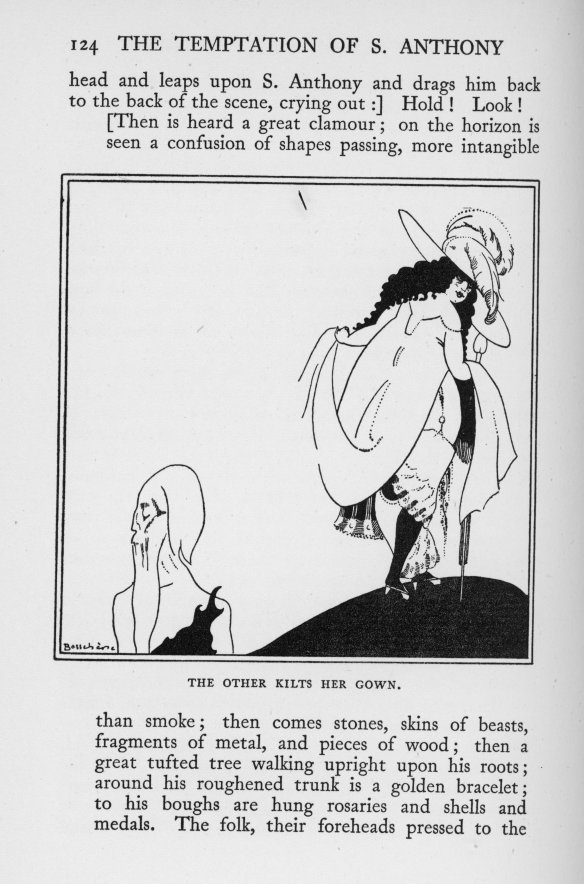

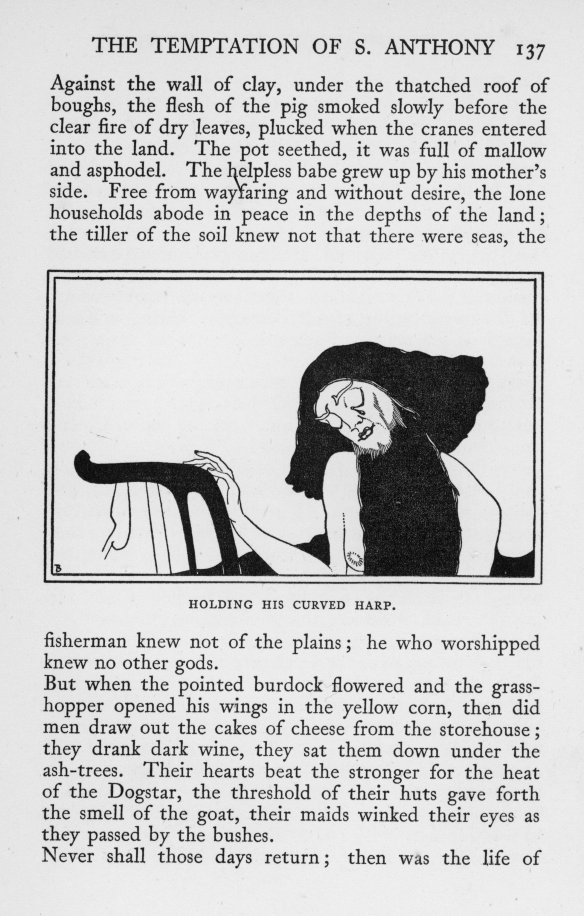


as are the smaller ones embellishing the text. As usual I have reproduced these whole pages.

This evening we dined on lean ham baked in a nest of bright orange butternut squash and a trio of differently coloured baby carrots; roasted potatoes in onions; piquant cauliflower cheese; and tender runner beans, with which the Culinary Queen drank Hoegaarden and I drank Carinena El Zimbado Garnacha Syrah 2017.



















